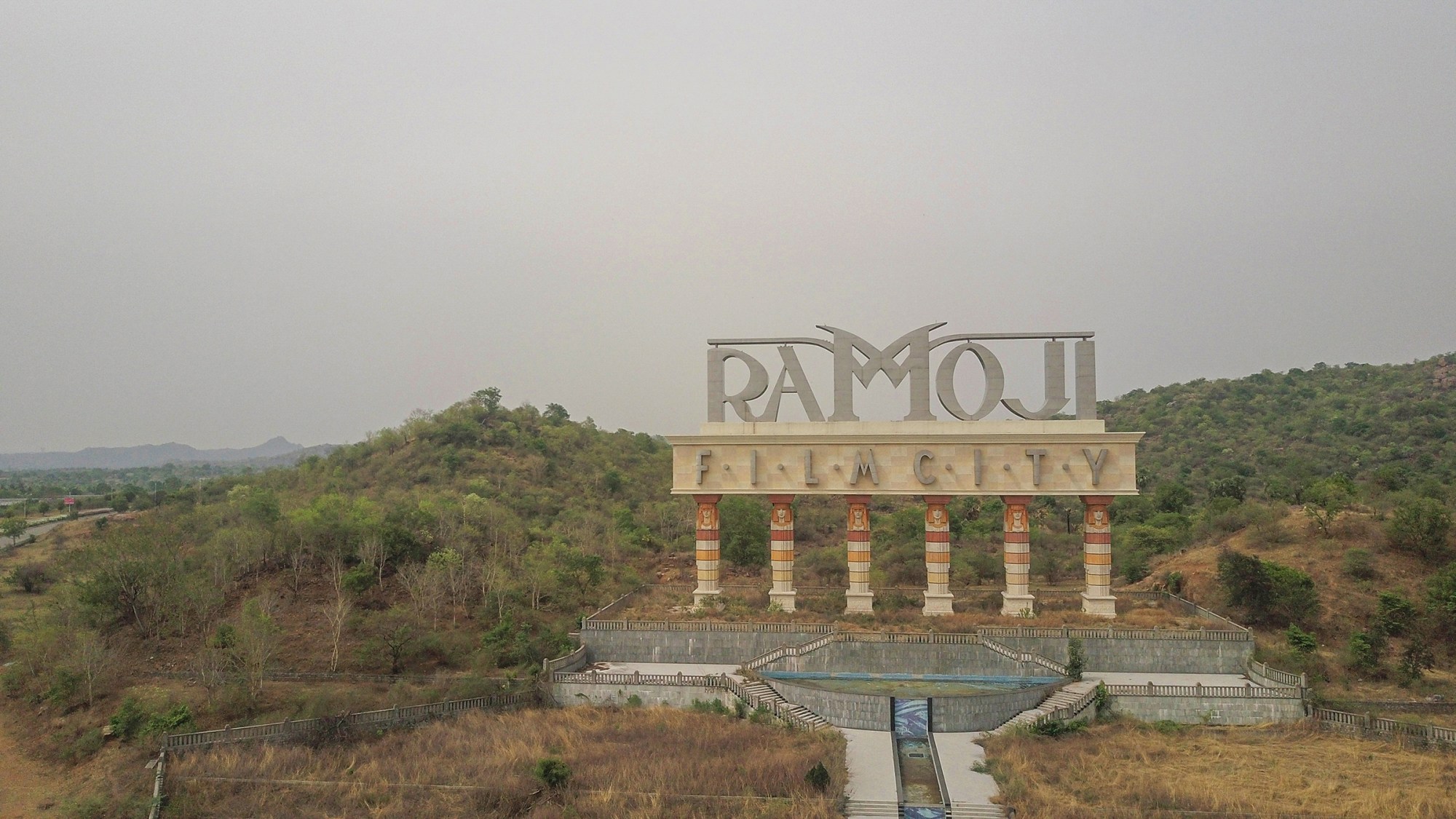
- Industry
The World’s Largest Film Studio – Ramoji Film City
The world’s biggest working film studio that you’ve probably never heard of isn’t in Hollywood. It isn’t in the US either. It lies about 25 miles outside Hyderabad, India, and is certified as such by the Guinness World Records.
Ramoji Film City covers 1,666 acres – Universal Studios, in Hollywood, covers 400. Ramoji Film City has 47 soundstages, 50 studio floors, 12 power substations, theaters, equipment and prop warehouses, outdoor movie sets, and post-production labs with editing, processing, visual effects, and dubbing facilities. This is the center of Tollywood filmmaking, the Telugu-language film industry in South India.
RFC is also a massive theme park. It is one of the most visited tourist destinations in India, attracting 1.5 million visitors each year. Studio tours in bright red trams ferry them around the complex. Guides point out police stations, five jails (including a “Ladies Central Jail”), outdoor markets, a Japanese garden, underground caves, a railway station, airport and hospital, and recreated sites like the Taj Mahal in Agra, the Bulund Darwaza in Fatehpur Sikri, the Brindavan Gardens in Mysore and even the Hollywood sign and the Statue of Liberty. Sometimes, sets built for movies that become megahits, like SS Rajamouli’s (of RRR fame) Baahubali, are saved and become part of the tour.
Daily live shows and parades are held in the theme park. The stores on Meena Bazaar (RFC’s equivalent of Disneyland’s Main Street) sell souvenir mugs and T-shirts. A wide variety of restaurants are all on the property. Guests can stay at the many affiliated hotels with package deals. Corporate events are welcomed. As are birthday parties. And weddings. Festivals like Diwali and Dussehra are celebrated with special events. Even International Women’s Day was marked by offering a special ‘Ladies Tour’ with two-fer tickets for a month.
As of this writing, RFC is offering a premium studio package for “Carnival” priced at about $30. It includes the tour in an airconditioned tram (yes, A/C costs extra), a visit to the Baahubali set; and priority access to the Action theatre where “Ramoji Movie Magic” is demonstrated, which includes the “Space Yatra” (space journey) and “Filmi Duniya” (film world) experiences.
Also included in the admission are live shows – Spirit of Ramoji, Wild West Stunt Show, and “Dadajinn’s Live TV Show & Lights Camera Action.” Complimentary rides for the kids, as well as a visit to the Exotic Bird Park and butterfly park with a Hawaiian-themed carnival parade and light show wrapping up the day, are part of the package. Of course there is the obligatory shopping stop for souvenirs.
The studio complex is the brainchild of Ramoji Rao, a media mogul who has produced more than 80 films under his Ushakiron banner. In addition, he makes his fortune in newspapers, television stations, hotels, and shopping malls. Envisioning a one-stop filmmaking facility, he bought the land and recruited an art director, Nitish Roy, to design the complex. It opened for business in 1996. The tourism aspect was introduced a few years later.
Roy told Scroll.in, “At that time, there were only jungles and mountains. We started developing the site, but we didn’t cut a single tree. We planted trees, in fact. We didn’t blast a single mountain. That’s why today the tram goes up and down. We tried to stay true to nature as much as possible.”
The primary purpose of Ramoji Film City, though, is film production. Up to 20 international films, or 40 domestic films, can be shot simultaneously in 500 locations with 6,000 personnel available for hire. The RFC’s website explains further: “The hills, lakes, fountains, pathways offer excellent landscapes for shooting films.” The sets range from Japanese garden to lions in Africa, to mock architectures of Paris, to miniature of Taj Mahal. Different landscapes, costumes, antiques, furniture, and paintings allow tourists to experience different eras, from the stone age to contemporary times. “The Mauryan art and architecture will take you on a journey to ancient India. As at Hollywood’s Universal Studios, Ramoji Film City doubles as a theme park.” Guidelines and permissions for aerial filming and filming with animals are also facilitated.
RFC boasts that you can walk in with a script and walk out with a film.
Roy continued to Scroll.in, “We also decided to build a central kitchen and dining room, such that if there are 20-25 units working at a time in the entire complex, they have a place where their food is served or distributed from,” he said. “We also realized the need for gardens. Many of the Hindi films and films in the south regularly feature songs, and they need big gardens with ample space where the hero and heroine can do their singing and dancing. That’s also one of the reasons why you see the different varieties of gardens in the complex.”
Tollywood films shot at RFC include scenes from the recent blockbuster RRR. The same director, SS Rajamouli, shot his other two hit films at RFC as well: Baahubali: The Beginning (2015), and Baahubali: The Conclusion (2017), the latter being the second highest-grossing film ever in India.
Bollywood star Shah Rukh Khan has shot a number of films in RFC. Those include Chennai Express (2013) and Dilwale (2015). So have superstars Salman Khan, with Wanted (2009) and Tere Naam (2003); and Hrithik Roshan, with Krishh 3 (2013), on the Mumbai set of RFC.
The bulk of filming is for the South Indian film industry, which includes Kannada, Bangla, Malayalam, and Tamil-language films. Outreach to indie filmmakers in the US has not been that successful, although the horror film Crocodile 2: Death Roll was shot at RFC, as were 2004’s Centipede, Nightfall (2000) and Beeper (2002, with Harvey Keitel).

